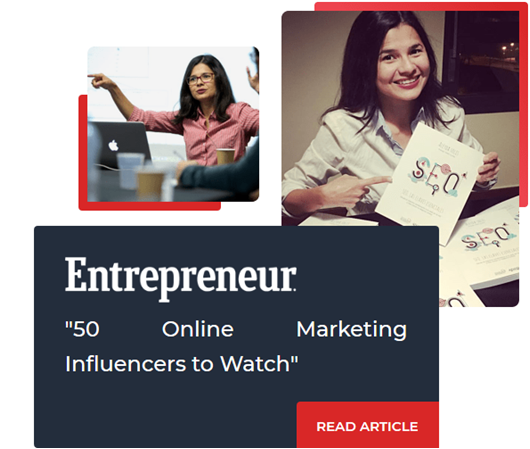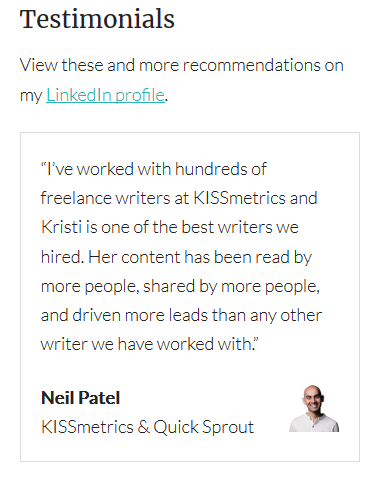Content is the internet currency but most of the bloggers failed to embrace this currency efficiently, leaving them grappling with a lot of content marketing challenges:
- 66% of bloggers stated that lack of time is their biggest problem.
- 46% of bloggers couldn’t come up with content generation requirements.
- 44% of bloggers admitted that raising engagement through-out their content is their biggest obstacle.
- Budget constraint pushed back to 38% of bloggers.
- When it comes to content diversity, 33% of bloggers failed to accomplish it.
Why do Buyers have Resistance?
The attitude to resist buying something is natural. Whenever a salesperson approaches a buyer or when a buyer views a sales page online, it’s as if the buyer is instantly ‘frozen’ or becomes defensive.
The general perception is that the seller is out to rip off buyers by selling their products which the buyer may not even need. Establishing credibility is important to help your audience break this barrier and become a loyal and repeat customer.
The true value of a copywriter is in breaking through the defensive shield, reaching out to the buyer and coaxing the buyer to take an action. It doesn’t matter which medium is used to deliver the advertisement copy, buyers usually display the same kind of resistance, such as:
- The buyer doesn’t need the product right now
- The buyer doesn’t trust the seller (ad copy) – blog authority works like a charm here!
- The buyer doesn’t believe in the workability of the product
- The buyer finds it too expensive
…and so on!
If you have some copywriting experience, you will surely realize that these reasons always ring true.
The Emotional Side of Convincing Someone
Any purchase, absolutely any, is governed by two human emotions: Pleasure and Pain.
For instance, people buy different variety of smartphones because it triggers the ‘pleasure’ feeling. On the other hand, an eBook on ‘How to save your marriage from divorce’ deals with the feeling of loss and pain and he/she buys the eBook with the hope of dealing with the pain.
It isn’t that logic doesn’t play a role at all. It does but mostly it comes as an afterthought.
The emotions of pain and pleasure are further divided into eight ‘universal motivations’ that triggers a person to respond, despite the nature of product or service on offer because knowingly or unknowingly, the product or service cater to the eight universal motivations. They are:
- To be wealthy
- To be healthy
- To be popular
- To be good looking
- To have security
- To have fun
- To have free time
- To have inner peace
A knowledgeable copywriter understands the nature of the product or service, the motivation/s influencing the offer and creates the ad copy accordingly.
In other words, the advertising copy should fulfil one or more of the universal emotions.
6 Steps to Remove Buyers Resistance
There are six steps to remove buyers’ resistance. It is an amalgamation of pressing the hot emotional buttons and copywriting skills that create a stellar marketing pitch and conversions.
1. How to Capture Buyer Attention?

Offering to fulfil the eight motivations is how a copywriter is successful to remove buyers’ resistance and turn visitors into paid buyers.
Ashley Phillips from The Website Group says: “What David Ogilvy said about readers’ psychology several years ago is still alive. The theory says that approximately 4 to 5 times as many viewers read the headline as they read the content body”.
The headline of an advertorial is the first point-of-contact with a potential buyer and thus, a lot of focus is given to crafting the most amazing headline which can grab buyer attention, prompting the potential buyer to read further and take an action.
Ogilvy further states:
“It follows that unless your headline sells your product, you have wasted 90% of your money…”
The headline is critical for the success of any advertising copy or newsletter. People have lower attention spans with their hands ready on the mouse to browse away from a page instantly, and the decision to move away happens when the visitor doesn’t find the headline interesting.Refer to the Copy Blogger and SITE123 guides of crafting compelling copies.
2. Identification and Aggravation of Buyers’ Problem

Here, we come to the next step of identifying and aggravating the problem of the buyer.
Humans are mostly complacent creatures. Even when we realize the existence of a problem, our inaction makes us complacent and over time, we accept the problem as a ‘given thing’, not bothered to find a solution.
Not Getting Enough Traction in Digital Market?
Problem Aggravation is a strategy actively used by experienced copywriters. Here, you penetrate the thinking of the reader/buyer and illustrate how not taking any action will ruin everything.
The task of the copywriter is to reacquaint the potential buyer with the problem and make the buyer realize the intensity of the issue.
In other words, highlight the negative effects of the problem and how by not solving it, the person is attracting negative impact on his/her life.
The pain–pleasure principle works here, again. The copywriter needs to aggravate the problem so much that the buyer feels the ‘pain’ of not taking any action. The idea is to stir up things so much that the buyer feels the agony and helplessness of the situation.
Genie Recycling knows exactly how to identify common problems of people and they write great TO DO posts about it. Their latest post “50 ways to make extra income this Christmas” is a great piece of writing.
An effective copy has to identify the buyers’ problem and aggravate it before offering any solution. Highlight all the negative points of the problem. A deep resource is a necessity just like MacFly Pro did for their Apple Users Statistics post.
3. Show Them You have the Tangible Solution

Source: moz.com/products/localHow to propose your product, that is, making buyer realize you’ve the solution?
You’ll agree with me that the buyer’s present state of mind is agitated and restless, and in ‘pain’ – the pain of inaction. Psychological tools were used to press the ‘pain’ buttons, making the buyer realize the intensity of the problem and how a lack of action is disastrous.
At this point, the buyer feels the ‘pain’ and wants to obliviate it.
How? The buyer is hoping you can! The iron is hot, strike the hammer.
This is a very important step because it is the point where the buyer is propositioned with the product. So far the copy highlighted the problem in great detail and the buyer is looking forward to a solution. The solution, the product, should match with the buyers’ expectations.
How to Ensure a Value-Based Product Proposition? A strongly relevant copy focuses solely on the product and its benefits. The product introduction should be convincing.
Begin by stating what led to the creation of the product, that is, how the product came into being? If the product is about relationships, the germination point could be relationship case studies and lack of couple therapy support. Again, if the product is about home improvement, the germination point could be the lack of resources available to people for engaging in low-cost home improvement solutions.
4. Displaying Authority
 Source: aleydasolis.com
Source: aleydasolis.com
How do you display authority in front of the targeted readers and convert it into sales? At this stage, we stand where the ad copy has grabbed the reader attention, identified and aggravated the problem and propositioned the product.
Simply offering a product won’t get converted into affiliate sales. The product and the product owner need to display authority. Why? Authority builds trusts, credibility, and validation.
The credibility and trustworthiness are established with any of the following reasons:
- Displaying industry awards and recognitions. This shows that the product seller is recognized by the industry and is a known figure.
- Displaying images or videos of conferences and seminars participated in by the seller.
- Length of duration and experience in the business. People who are in any specific business for a long period of time receive greater credibility.
- Testimonials of people and companies who are past clients or customers.
- A visible record of benefits received after using the product. It could be before and after images, video testimonies, survey data and other options.
5. Share Irresistible Benefits of Your Solution

How to move towards sharing irresistible benefits after building authority with the intended buyer?
All this while, the ad copy talked about the ‘product’ but now the copy should discuss how the product will benefit the buyer and not that it may. There shouldn’t be any scope for ifs and buts. The copy has clearly outlined the nature of the product and its usage, now it’s the time to display its unimaginable benefits.
The buyers are interested to know what the product can do for them and not its features! We’ve already shown them that.
Aren’t ‘features’ and ‘benefits’ same? No, they aren’t.
Most copywriters fail to distinguish between the two. Features are agents of benefits. A particular feature delivers a benefit to the end user. As such, buyers are interested in the benefit and not feature. In fact, most often than not, buyers take the final decision on the basis of benefits and not features.
It is essential to draw the distinction between ‘features’ and ‘benefits’. Follow this process to make it simpler.
6. Social Proof
 Source: kristihines.com
Source: kristihines.com
The principle behind the popularity of ‘social proof’ exists in herd mentality. It states that people are wired to follow the lead of other who is similar to them. In short, our peers define our judgment. So if a group of people is purchasing a certain product, many other will be similarly interested as well.
Social proof is nothing but testimonials. These testimonials can be in any form.
Present full details of the person sharing a testimonial. Details could be the full name, location, and website (if any), rather than the anonymous initials.
Displaying a video testimonial on the ad copy builds immense credibility. The intended buyer can see and hear the customer. There is no lingering doubt over the authenticity of the product.
Final Words
Your writing copies should compel and connect with targeted audience fueling emotions to make them do positive actions.
Most of the time bloggers think that writing products reviews will be enough to get sales. It is actually a myth because every review on the blog should be treated as the product’s landing page – The page which should pass the complete copywriting cycle as we discussed above. A copy can enable profit on a grand scale for you – for your affiliate site, eCommerce store, or corporate website. Master the art of crafting thoughts; Practice and more Practice will make it sharpen.
Get All Your Ecommerce Problems Solved Under One Roof








